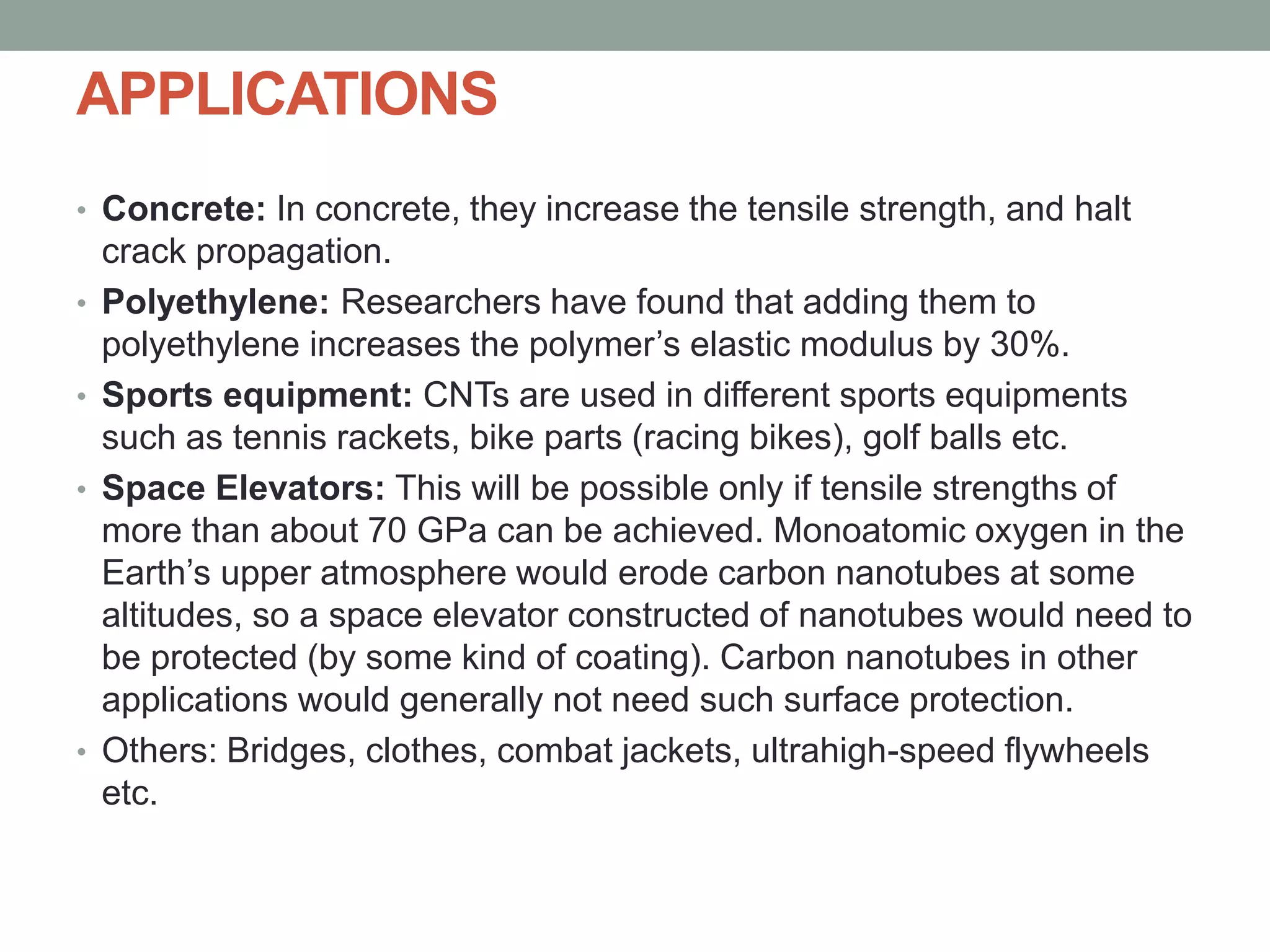Carbon nanotubes were discovered in 1991 and are long thin cylinders of carbon with remarkable strength and other properties. They exist in single-walled and multi-walled forms and can be metallic or semi-conducting depending on their structure. Common synthesis methods are arc discharge, laser ablation, and chemical vapor deposition. Carbon nanotubes have a wide range of applications from concrete and sports equipment to future uses like space elevators. Their increasing production and applications are expected to help address problems like pollution.











